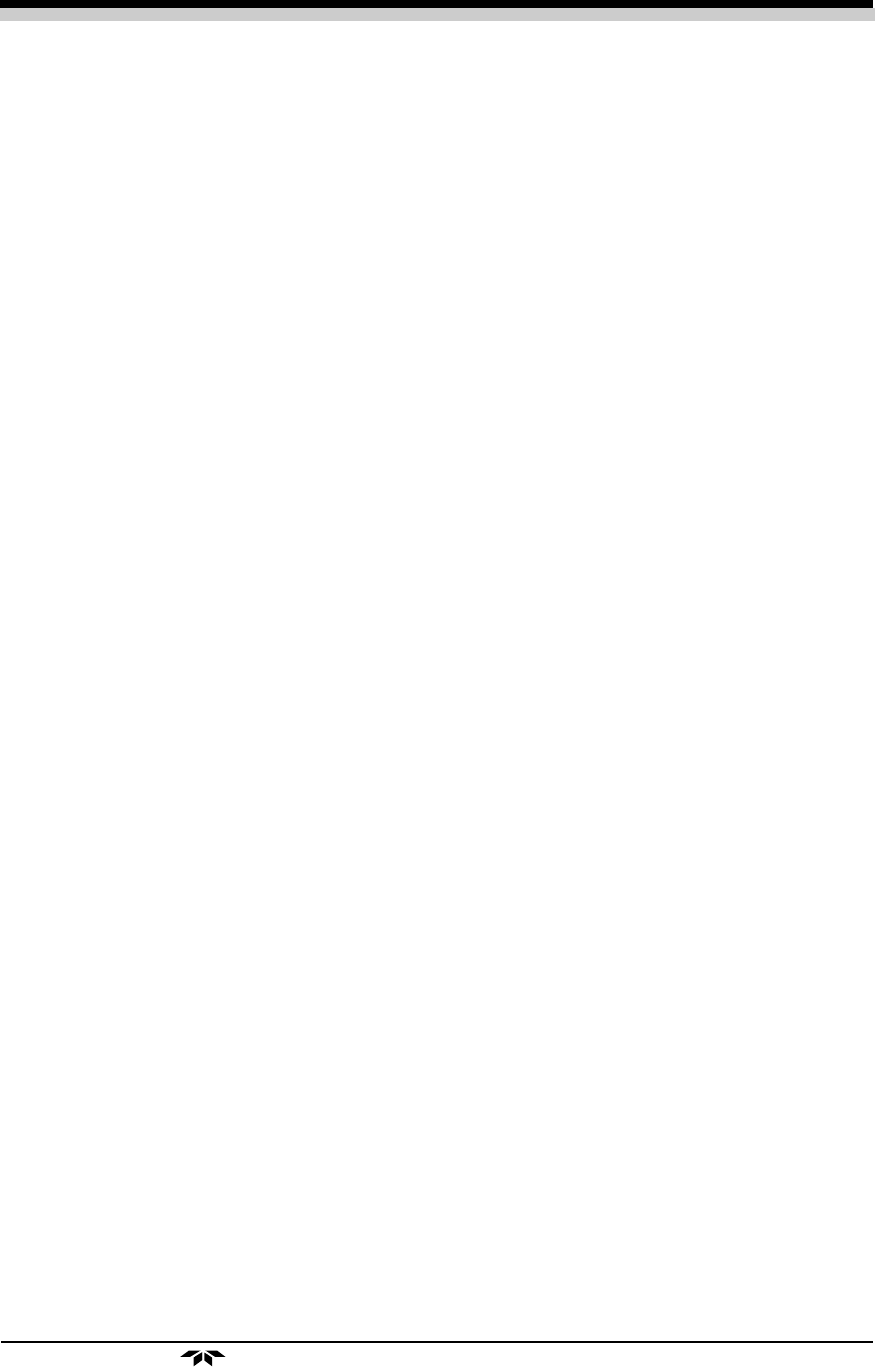
Photometric Analyzer Operation /Control Unit 3
Part I 3-31
Teledyne Analytical Instruments
to the analyzer from the computer.
3.8.2 The Curve Algorithm Screen
The Curve Algorithm is a linearization method. It provides from 1 to 9
intermediate points between the ZERO and SPAN values, which can be
normalized during calibration, to ensure a straight-line input/output transfer
function through the analyzer.
Each range is linearized individually, as necessary, since each range
will usually have a totally different linearization requirement.
To linearize the ranges, you must first perform the four steps indicated
at the beginning of section 3.8 Programming. You will then be in the second
System menu screen.
3.8.2.1 Manual Mode Linearization
To linearize manually, you must have previous knowledge of the
nonlinear characteristics of your fluides. You enter the value of the differen-
tial between the actual concentration and the apparent concentration (analyz-
er output). TAI has tabular data of this type for a large number of fluides,
which it makes available to customers on request. See Appendix for ordering
information. To enter data:
From the System Functions Screen—
1. Use < > to select ALGORITHM , and Enter.
2. Select and Enter SETUP.
3. Enter MANUAL from the Calibration Mode Select screen.
Dpt INPUT OUTPUT
Ø Ø.ØØ Ø.ØØ
The data entry screen resembles the verify screen, but the fluid values
can be modified and the data-point number cannot. Use the < > keys to
toggle between the INPUT and OUTPUT fields. Use the DÑ keys to set the
value for the lowest concentration into the first point. Then press Enter.
After each point is entered, the data-point number increments to the
next point. Moving from the lowest to the highest concentration, use the DÑ
keys to set the proper values at each point.
Dpt INPUT OUTPUT
0 Ø.ØØ Ø.ØØ
